Visible light communication technology is an emerging wireless optical communication technology developed after the invention and application of white light LEDs. LED can not only provide indoor lighting, but also can be applied to wireless optical communication systems to meet indoor personal network requirements.
Visible light communication technology refers to the use of high-speed light-emitting response characteristics of semiconductor (LED) devices to modulate and transmit information with a high-speed rate-modulated optical carrier signal that is imperceptible to the naked eye, and then use photodiodes and other photoelectric The conversion device receives the optical carrier signal and obtains the information to combine visible light communication and LED lighting to build a dual-purpose base station lamp for LED lighting and communication. It is an emerging wireless optical communication technology f61 developed on the white light LED technology. White LED has the advantages of low power consumption, long service life, small size, and environmental protection. Especially its response sensitivity is very high, and it can be used for ultra-high-speed data communication.
The visible light data communication transmitter modifies the electric signal according to the transmitted data, and then uses the LED to convert it into a light signal and sends it out. The receiver uses a light-receiving element to receive the light signal, then converts the light signal into an electrical signal, and reads it as signal data after demodulation . In terms of wavelength, visible light is used, so the wavelength ranges from 380nm for blue light to 780nm for red light"J.
Traditional optical communication uses invisible light for communication and transmission, mostly infrared light with a longer wavelength. In this part, it has been quite mature. The matching standards are also widely adopted by the industry. Visible light data communication will limit the receiving area. The LED point light source visible light wireless communicator completely eliminates the doubt that traditional high-frequency wireless electromagnetic waves will interfere with the human body and surrounding electronic equipment. It is very suitable for application in road guidance, display guides, and intelligent road traffic systems (OTS) , Hospitals, indoor information transmission and other fields of limited space data transmission.
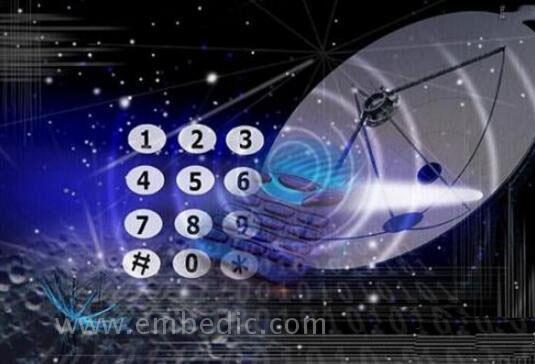
The origin of visible light communication can be traced back to the 1870s, when Alexander Graham Bell proposed to use visible light as a medium for communication, but at that time it was unable to generate a useful optical carrier, nor to transmit light from one place to another. It was not until the invention of the laser in 1960 that optical communications had a breakthrough development, but the research field was basically concentrated in the fields of optical fiber communications and invisible light wireless communications. Until recent years, the semiconductor (LED) lighting technology known as "green lighting" has developed rapidly. It uses the high-speed lighting response characteristics of semiconductor (LED) devices to modulate the signal to the visible light of the LED for transmission, so that visible light can communicate with The combination of LED lighting to build a dual-purpose base station lamp for LED lighting and communication can provide a new broadband access method for optical communication. With the rapid development of white LEDs. Visible light communication has gradually developed beam beech i.
LED visible light communication can be divided into two categories: outdoor communication and indoor communication. Outdoor LED visible light communication technology is currently mainly used in Intelligent Transport Systems (ITS: Intelligent TransportaTIon Systems), G. In 1998, Pang et al. proposed the use of LED traffic lights to transmit voice broadcast signals to vehicles, and added the voice signals to the LED light source through OOK modulation to achieve low-speed wireless LED visible light transmission. Researchers in the Zhongchuan Research Office proposed the LED road lighting communication system IluJ in 2003. G. Pang et al. only carried out research on the use of LED traffic lights for voice transmission. Researchers in the Zhongchuan Research Laboratory analyzed the signal-to-noise ratio in the LED highway lighting communication system under different receiving direction angles and field of view angles, and Under a certain error rate, the relationship between the signal-to-noise ratio and the received data rate is that the LED visible light road lighting communication system is better than the infrared road traffic communication system.
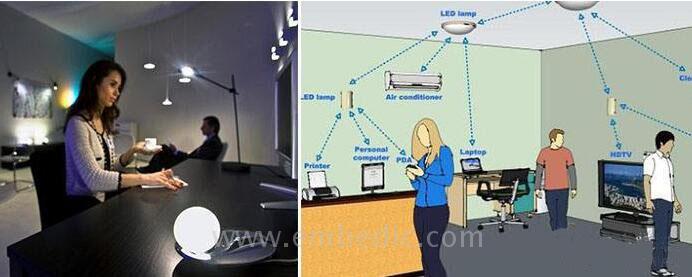
With the deepening of research on intelligent transportation systems, two types of visible light communication systems including LED traffic lights, traffic lights formed between the front and rear LED lights of the car to the car and car headlights to car taillights have emerged.
Indoor LED visible light wireless communication technology is mainly used in indoor wireless broadband access networks. In 2000, Tanaka Yuichi, a researcher in the Zhongchuan Laboratory, conducted preliminary mathematical analysis and simulation calculations on the channel of the visible light communication system based on indoor white LED communication light sources. Analyzed the possibility of white LED lighting used as indoor lighting and as a communication light source. Subsequent studies are also similar theoretical analysis reports. However, the existing researches mostly focus on the layout design of LED lighting sources, and the overall design analysis of visible light communication systems based on white LED lighting sources is not perfect.
The Visible Light Communication Consortium (VLCC: Visible Light CommunicaTIonsConsorTIum) was established in October 2003. At the beginning of its establishment, it focused on franchised enterprises. VLCC carried out various working group activities for the standardization and application of visible light communication technology. Until January 2007 In order to increase the visibility of visible light communications, 23 member companies including Toshiba and other companies formally launched working group activities. The specific content is the review of portable terminals and tags, and the establishment of a visible light ID standardization working group. Visible light communication is a commonly used communication technology for lighting appliances and peripheral equipment such as signs. In order to popularize visible light communication, it is necessary to establish standardized specifications that can be applied to various terminal devices. At present, VLCC has formulated two specifications, namely, the visible light communication system specification VLCC . STD. 001 and low-speed communication visible light ID specification VLCC. STD. 003.
The scope of application is for the communication system that uses visible light as the medium, especially when the system is divided into the physical layer and the application upper layer, the applicable scope of the physical layer is specified, including the light-emitting element at the receiving end, the free space interface between the light-receiving element and the light-emitting element at the receiving end f". In October 2004, the Integrated Exhibition of Imaging, Information and Communication (CEATEC) l- held in Japan Dry Leaf, a series of exhibition activities conducted by many members of the International Visible Light Communication Association, proved to the world that the The many benefits of LED lighting to transmit high-speed data to handheld and vehicle-mounted computing devices. Add the data to the visible light generated by ubiquitous lighting equipment (including illuminated signs, traffic lights and indoor lighting equipment), and then pass Expand RF technology and create a broader wireless communication world for people.

The key technology of indoor LED visible light communication
VLC is a wireless optical communication method, and its system includes two parts: downlink and uplink. The downlink includes two parts: transmitting and receiving. The transmitting part mainly includes an input and processing circuit that converts the signal source signal into an electric signal that is convenient for optical channel transmission, and an LED visible light drive modulation circuit that modulates the change of the electric signal into a change in the intensity of the optical carrier. The modulated light emitted by the white LED light source propagates in all directions in the space with a large emission angle.
Since the room is not affected by strong background light and weather, there is basically no loss in light propagation. However, due to the large number of LED light sources and a large surface area, there are several differences between the transmitter and the receiver. Optical path, different optical paths reach the receiver at different times, which will cause so-called inter-symbol interference (ISI). Due to white light
The LED light source emits visible light with a large divergence angle. It is basically harmless to human eyes and has no electromagnetic wave damage. Therefore, the transmitter can have a larger transmission power, which greatly improves the reliability of the system.
The receiving part of the system mainly includes an optical system that can achieve the best reception of the signal light source, a photodetector and a preamplifier circuit that restores the optical signal to an electrical signal, and converts the electrical signal into a signal processing and output that can be recognized by the terminal Circuit. The optical signal in the room is converted into an electrical signal by a photodetector, and then the electrical signal is amplified and processed to restore it to the same signal as the originator. The uplink and downlink components of the system are basically the same except for the light source used. The light source used in the uplink is still composed of white LEDs, but the emission area is small and the emission angle is small. The photodetector installed on the ceiling receives the light signal from the user. If the above-mentioned basic structure is symmetrically configured between the two communication parties, a full-duplex VLC system that can work in both directions at the same time can be obtained. The network composed of this system is called a visible light network.
In the VLC system, the white light LED has the dual functions of communication and illumination. This is because the brightness of the white light LED is very high, and the modulation rate is very high, and the human eyes cannot feel the light flicker at all. VLC systems are mostly designed as light intensity modulation/direct detection systems, using Manchester encoding and 00K modulation methods. In the IM/DD system, due to the presence of multiple light sources, each receiver will receive optical signals from different directions, so that communication will not be interrupted because a certain optical path is blocked, ensuring the reliability of communication.
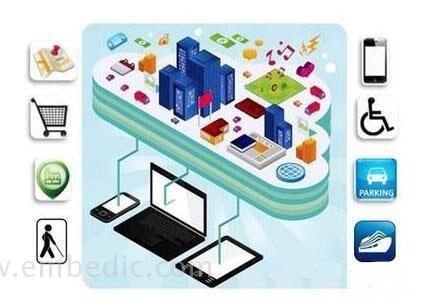
Currently, LED visible light communication mainly includes the following key technologies:
1) Visible light channel research
Visible light communication system has a different channel impulse response from infrared wireless communication, and both have different characteristics. The causes of ISI in these two systems are also different. It is necessary to control the channel of the VLC system in a multi-light source and time-varying channel environment. The impulse response and ISI caused by different optical paths are studied in depth to solve the influence of ISI.
2) Inter-code interference overcoming technology
Due to the different distribution positions of the LED unit lights and the scattering of particles in the atmospheric channel, the optical pulses will extend in time, and the pulse of each symbol will widen and extend to the time interval between adjacent symbols, resulting in inter-symbol Interference (ISI), which leads to system performance degradation III1.
3) Selection and layout of light source
In the visible light communication system, the light source plays a vital role. As an indoor lighting equipment, it must have the characteristics of high brightness, low heat dissipation, low power consumption, and wide radiation range. On the other hand, as the light source of the optical communication system, it must have the advantages of long service life, good modulation performance, high response sensitivity, and large transmission power. Combining the above two aspects, the best option that can meet the requirements is white LED. In the actual system, because the size of each room and the indoor facilities are not the same, in order to achieve the best communication effect, the light intensity distribution in the room must be roughly unchanged, and communication blind areas (area that cannot be illuminated by light) should be avoided as much as possible. appear. To achieve this goal, the layout of LED lights must be reasonably arranged according to different house news.
4) Number of best LED lighting
In the VLC system, the LED lights usually installed indoors have a larger radiation angle to cover the entire room as much as possible. However, due to the occlusion of pedestrians and equipment, “shadows” will be formed on the surface of the receiver, which will affect the communication performance. Therefore, it is necessary to minimize the impact of this "shadow". For lighting, the more lights installed indoors, the higher the brightness of the room and the better the lighting effect. At the same time, the received power will greatly increase. However, simply increasing the number of LED lights can solve the “shadow” problem, but it cannot maximize the communication performance of the system. This is because different light sources and receivers have different optical paths, and multiple different optical paths will cause multipath delay and inter-symbol interference. Therefore, it can be seen that the more the number of LED lights, the more serious the ISI, and the number of LED lights must be selected reasonably.
5) Modulation, coding and demodulation technology
At present, most visible light communication systems use intensity modulation (IM) direct detection (DD) non-coherent systems, and most of the coding methods are binary OOK (on-off keying) coding. However, because OFDM can effectively combat inter-symbol interference caused by multipath propagation, its implementation complexity is much smaller than that of a single carrier system using an equalizer. Therefore, the use of OFDM modulation technology has a good development prospect.
The University of Edinburgh in Scotland announced that it has developed a new technology to reduce the power consumption of Li-Fi networks to 0.5 watts and increase the transmission distance by 10 times. Li-Fi is a new wireless transmission technology that uses visible light waves for data transmission, invented by German physicist Harald Haas. This technology transfers data by changing the flicker frequency of the room lighting light. As long as the light is turned on indoors, the Internet can be accessed without WiFi.
According to the announcement issued by the university, researchers use light waves emitted by micron-level light-emitting diodes to enable the Li-Fi network to use less than 0.5 watts of power within 10 meters and transmit data at 1.1Gbps speeds, which consumes only 10 watts 5% of the electricity consumption of LED bulbs.
This research was led by Professor Harald Haas from the University of Edinburgh in Scotland and completed with pureLiFi in the United States. Harald Haas is known as one of the global leaders in LED technology.
Visible light communication has become a battleground in the field of international communication research in the United States, Japan, Europe and other countries. Many experts believe that Li-Fi represents the future trend of mobile Internet. Li-Fi will be much cheaper than WiFi because it uses visible light waves instead of radio waves to transmit signals. The spectrum is 10,000 times larger than the radio spectrum, and higher data density can be obtained.
Professor Harald Haas said that Li-Fi is revolutionizing wireless communication technology and can become a booster for the rise of the Internet of Things. He said that on the basis of this research breakthrough, he will continue to devote himself to the vigorous development of Li-Fi technology and make it a transmission method of the Internet in the near future.
A US market research company pointed out that the total sales of the visible light communication technology market is expected to increase significantly from US$96 million in 2012 to US$6.14 billion in 2018.
In China, some companies are also conducting research on Li-Fi network technology. Fudan University successfully realized the use of indoor visible light for network signal transmission in October last year. At that time, the highest transmission rate could reach 3.25G, and the average Internet speed was 150M.
In addition, Kingsun Optoelectronics signed an LED wireless optical communication project construction cooperation agreement with Tsinghua University in May 2013. The two parties formally launched the construction of a school-enterprise joint research institution in the field of optical communication, and strive to build it into a national platform. At present, the two parties have successfully developed samples of Lifi communication mobile phone version.
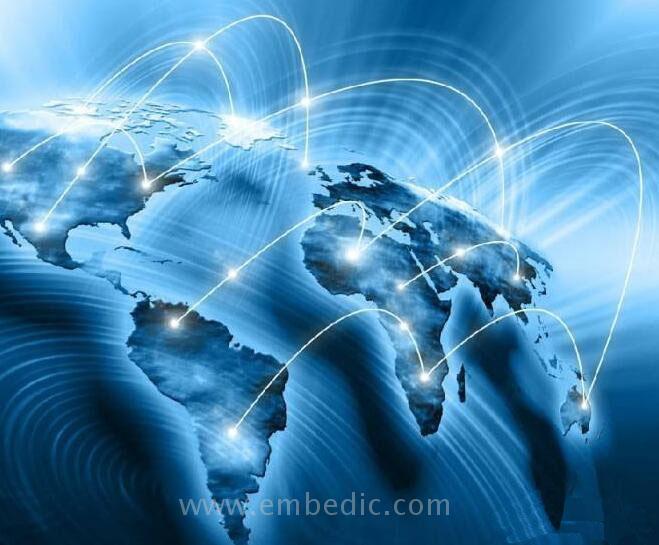
Visible light wireless communication is also called "optical fidelity technology". The English name LightFidelity (LiFi for short) is a new wireless transmission technology that uses the visible light spectrum (such as the light emitted by a bulb) for data transmission. It is developed by the School of Electronic Communication, Edinburgh University, UK. The chair of the department, German physicist Harald Hass (Harald Haas) invented.
LiFi is the use of laid-out equipment (ubiquitous LED lights) to form a device similar to AP (WiFi hotspot) by implanting a tiny chip on the bulb, so that the terminal can access the network at any time. This technology transfers data by changing the flicker frequency of the room lighting. As long as the lights are turned on indoors, the Internet can be accessed without WiFi.
LiFi uses visible light to achieve wireless communication, that is, using electrical signals to control high-speed blinking signals from light-emitting diodes (LEDs) that are invisible to the naked eye to transmit information.
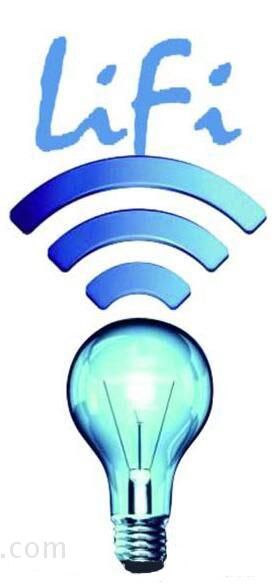
The technical principle of LiFi
Visible light wireless communication (called LiFi-Light Fidelity) uses fast light pulses to wirelessly transmit information. It is completely feasible to encode information in light according to different rates. For example, LED on means 1, and off means 0, and information can be transmitted by fast switching. Due to the luminous intensity of LEDs, human eyes will not notice the rapid changes in light. LiFi technology is still in the laboratory stage, a patented technology invented by Haas and his team at the University of Edinburgh.
The light bulb has always been regarded as a symbol of the inspiration flashes that inventors dream of. It has the same advantages as optical fiber communication, high bandwidth and high speed. The difference is that LiFi allows light to spread in the environment around us. Wherever natural light can reach, there is LiFi signal. LiFi technology uses already laid equipment (ubiquitous light bulbs). As long as a tiny chip is implanted in the light bulb, it can become an AP (WiFi hotspot) device, so that the terminal can access the network at any time .
Disadvantages of LiFi
Although LiFi does have the advantage of not being interfered by radio signals, many of its advantages are overshadowed by the fact that visible light cannot penetrate walls. This key fact gives WiFi a great advantage. This visibility limitation improves system security, but it is not clear at present the minimum distance for signal reception. It is conceivable that people can intercept optical signals by using a telephoto lens and an appropriately adjusted optical sensor. TechCrunch said that although LiFi is advertised as a possible onboard wireless communication technology, the large-scale popularization of WiFi in most American airlines makes the application prospects of LiFi on airplanes less and less optimistic.
Uses of LiFi
Li-Fi encodes data by adjusting the LED light output. Human eyes cannot perceive the rapid flicker, but the receiver on the desktop computer or mobile device can read the signal, and even return the signal to the signal transceiver on the ceiling of the room to provide two-way communication. However, many light-emitting diodes use phosphor coatings to convert blue light into white light, which also limits the data transmission rate. In this research published in Optics Express (OpTIcs Express), Haas and his team have shown that replacing existing LED lights with laser diodes can greatly improve the current situation. With the high energy and light efficiency of the laser, the data transmission rate can be 10 times faster than that of the LED. Without phosphors, laser illumination can mix light of different wavelengths to produce white light. This means that light of each wavelength can be used as a separate data channel, and the same light wave can be transmitted in both directions, which can greatly increase the data rate of light transmission. The experiment of the University of Edinburgh team used 9 laser diodes.
Although LED-based Li-Fi can reach a data transmission rate of 10 Gb/s, it can improve the upper limit of the data transmission rate of Wi-fi7 Gb/s. The data transmission rate of the laser can easily exceed 100 Gb/s.
At present, this kind of equipment is still very expensive. The University of Edinburgh is seeking mass production to reduce its cost, and it can be applied to the lighting market. The headlights of the BMW i8 are based on this laser light.
IC MCU 16BIT 64KB MROM 48LQFP
IC MCU 8BIT 768B OTP 28SOIC
IC MCU 16BIT 88KB FLASH 28SSOP
IC MCU 16BIT 32KB FLASH 44TQFP
1
2
3
4
5
6